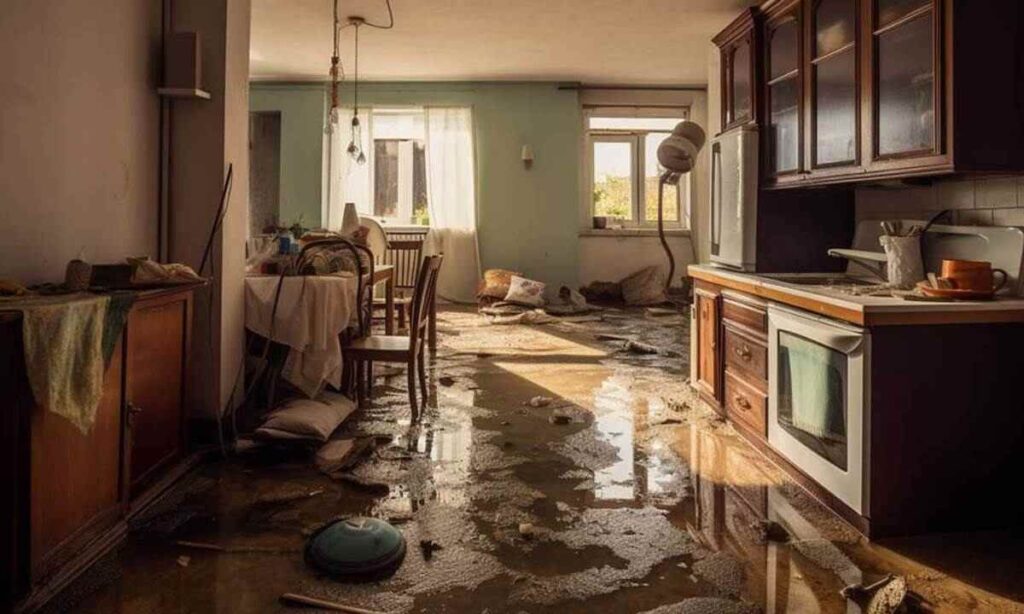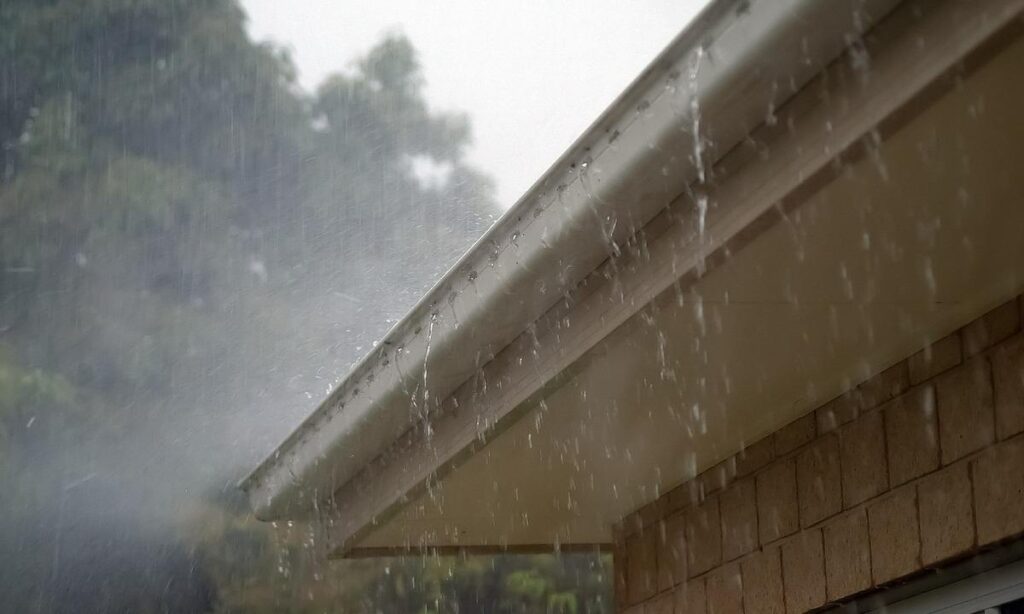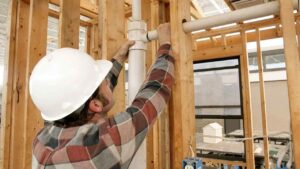Blogs
Tips for Preventing Water Damage During Home Construction

Building your dream home is an exciting journey, but it comes with its own set of challenges. One formidable foe that can wreak havoc on your construction project is water damage. From foundation issues to mold growth, water damage can compromise the structural integrity of your home and lead to costly repairs. In this comprehensive guide, Intensa Dry will help you explore effective tips and strategies to prevent water damage during home construction. By implementing these measures, you’ll not only protect your investment but also ensure a solid foundation for the future of your home.
Understanding the Impact of Water Damage:
Embarking on the exciting journey of building your dream home comes with its challenges, and one significant foe is water damage. It’s crucial to grasp the potential consequences of water damage during construction. From compromising the foundation to fostering mold growth, water damage can jeopardize the structural integrity of your home. In this exploration, we’ll delve into these impacts, emphasizing the necessity of proactive measures. Understanding these risks is the first step towards ensuring a resilient and enduring home construction process.
1. Foundation Compromises:
The foundation serves as the bedrock of a home, and water damage poses a substantial threat to its structural integrity. When water infiltrates the foundation, it initiates a cascade of issues. Cracks may form, compromising stability, and settling problems can emerge, resulting in an uneven foundation. Addressing these concerns is paramount as unchecked foundation compromises can lead to significant structural damage over time, necessitating costly repairs and potentially jeopardizing the safety of the entire structure. Therefore, vigilant preventive measures, such as high-quality waterproofing and proper drainage, are indispensable to fortify the foundation against water-related challenges during construction.
2. Mold and Mildew Growth:
Moisture is a breeding ground for mold and mildew, making construction sites particularly susceptible to their growth. The ramifications extend beyond aesthetic concerns; health risks and structural damage loom large. Airborne mold spores can pose health hazards to both construction workers and future occupants, potentially causing respiratory issues and allergies. Structurally, mold compromises building materials, leading to not only unsightly surfaces but also potential weaknesses in the structure. Combatting mold and mildew requires a comprehensive approach, including effective moisture control, proper ventilation, and timely remediation to ensure a healthy and structurally sound living environment.

3. Wood Rot:
Wood, a prevalent construction material, is highly susceptible to water-induced rot. This presents a dual threat of structural weakness and increased maintenance costs. As wood loses its strength due to rot, it jeopardizes the stability of the structure, potentially leading to safety hazards. Addressing wood rot often involves not only repairing the affected areas but also replacing compromised materials. This not only incurs additional costs but can also lead to project delays. Therefore, a proactive stance against wood rot is essential during construction. This includes meticulous moisture control, proper sealing of wooden components, and swift intervention at the first signs of water damage to preserve the structural integrity of the home.
4. Material Deterioration:
Construction materials, ranging from concrete to drywall, are susceptible to water damage, impacting their performance and longevity. The consequences include a reduced lifespan for these materials and potential compromises to the building envelope. Materials exposed to water damage may exhibit premature deterioration, necessitating replacements well before their expected lifespan. Additionally, compromised building envelope integrity can lead to reduced insulation efficiency and increased vulnerability to external elements. To mitigate these risks, construction projects must implement measures such as proper storage of materials, timely drying of construction components, and meticulous attention to maintaining the integrity of the building envelope throughout the construction process. Such measures safeguard the long-term durability and performance of the constructed home.
Tips for Preventing Water Damage:
As the saying goes, “an ounce of prevention is worth a pound of cure,” and nowhere is this truer than in the realm of home construction when it comes to safeguarding against water damage. Building your dream home is a significant investment, and ensuring its longevity requires a proactive approach to mitigating potential water-related risks. From foundation compromises to the insidious growth of mold, water damage can pose a myriad of challenges during the construction process. In this guide, we will explore a range of invaluable tips designed to be the first line of defense against water damage, providing a blueprint for a resilient construction journey that not only protects your investment but also lays the groundwork for a durable and enduring home.
1. Site Inspection and Grading:
The initial stages of construction set the tone for the entire project, and conducting a meticulous site inspection before laying the foundation is a fundamental step. This thorough examination aims to identify potential water sources and drainage issues that could compromise the stability of the structure. Crucially, proper grading around the foundation is paramount, serving as a proactive measure to ensure water is directed away from the construction site. Neglecting this crucial step may result in water pooling around the foundation, elevating the risk of water infiltration and subsequent damage. By investing time and attention in this preliminary inspection and grading process, you establish a resilient foundation, minimizing the potential impact of water-related challenges and fortifying the structural integrity of the entire construction project.
2. Quality Foundation Waterproofing:
Securing a solid foundation is paramount in any construction project, and investing in high-quality waterproofing materials is a strategic move. This involves applying a waterproof membrane or sealant meticulously, creating an impenetrable barrier. This fortified foundation serves as a frontline defense against water damage, effectively preventing moisture from infiltrating and compromising the structural integrity of the building over time. The application of a waterproof barrier not only shields the foundation from immediate water threats but also ensures long-term durability, mitigating the risk of cracks, erosion, and other potential issues. By prioritizing this foundational protection, you lay the groundwork for a resilient and enduring structure that can withstand the test of time and environmental challenges.
3. Effective Drainage Systems:
Implementing a robust drainage system is a cornerstone in safeguarding your construction project. This involves installing well-designed gutters, downspouts, and French drains to efficiently redirect water away from the structure. The meticulous design ensures effective water flow management, preventing potential pooling or stagnation. However, the effectiveness of these systems hinges on regular maintenance. Regularly cleaning and maintaining gutters are imperative tasks that prevent water overflow and potential clogs. Neglecting this maintenance could lead to water infiltration, causing damage to the foundation and other structural elements. By prioritizing both the installation and upkeep of drainage components, you establish a comprehensive defense against water-related risks during construction, ensuring the longevity and resilience of your project.
4. Protective Barriers During Construction:
Implementing temporary protective measures like silt fences is pivotal in construction. These barriers serve as a crucial buffer, effectively mitigating the risks of soil erosion and sedimentation. By strategically placing silt fences, construction sites can prevent sediments from entering nearby water bodies. This not only safeguards water quality but also aligns with environmentally responsible construction practices, demonstrating a commitment to sustainability. The use of silt fences underscores a proactive approach to minimizing the environmental impact of construction activities, contributing to the preservation of ecosystems and adherence to regulatory standards.
5. Proper Storage of Building Materials:
Store construction materials in covered and dry areas to prevent moisture absorption. Moisture-laden materials are more prone to damage and can compromise the structural integrity of the building. Additionally, utilize waterproof coverings for materials stored outdoors to shield them from rain and other weather elements.
6. Prompt Drying of Construction Materials:
Address any water intrusions promptly and thoroughly dry construction materials before installation. Swift action is key to preventing mold growth and material deterioration. Employ dehumidifiers and fans in enclosed spaces to accelerate the drying process, ensuring a solid foundation for subsequent construction phases.
7. Weather Monitoring and Construction Scheduling:
Stay vigilant about weather forecasts throughout the construction process. Plan activities accordingly, avoiding critical tasks during heavy rain or extreme weather conditions. This proactive approach minimizes the risk of water damage and potential setbacks in the construction timeline.
8. Regular Inspections by Professionals:
Maintaining vigilance through routine inspections conducted by qualified professionals is a cornerstone of effective water damage prevention during construction. These inspections should be scheduled regularly, focusing on vulnerable areas such as the roof and foundation. Early detection of potential water damage is essential, as it enables swift intervention and the implementation of corrective measures. Timely identification and resolution of issues prevent water damage from escalating, curbing the risk of more extensive and costly problems. By prioritizing proactive inspections, construction teams can stay ahead of potential water-related challenges, ensuring the structural integrity of the project is safeguarded throughout the building process. This diligence not only protects the immediate construction site but also establishes a foundation for a durable and resilient structure in the long run.
9. Proper Ventilation:
Ensure adequate ventilation during the construction process to prevent condensation and humidity buildup. Proper ventilation reduces the risk of moisture-related issues, such as mold growth, and contributes to a healthier indoor environment. Install exhaust fans in moisture-prone areas like bathrooms and kitchens to enhance airflow.

10. Education and Communication:
Educate construction workers about the significance of preventing water damage and provide training on best practices. Foster open communication channels to address concerns promptly. An informed and vigilant team is crucial for the successful implementation of preventive measures, creating a collective responsibility towards preserving the integrity of the construction project.
Conclusion:
Water damage during home construction is a formidable adversary, but armed with the right knowledge and proactive strategies, you can protect your investment and ensure the longevity of your dream home. From effective drainage systems, to opting for an efficient team of professionals, each tip plays a crucial role in creating a robust defense against water-related challenges. By incorporating these preventive measures into your construction plan, you not only safeguard your project from potential setbacks but also lay the foundation for a home that stands the test of time. Remember, an ounce of prevention is worth a pound of cure, especially when it comes to water damage in construction.
FAQ’s
How do you prevent water damage in a house?
Prevent water damage by ensuring proper foundation waterproofing, installing effective drainage systems, and promptly addressing leaks or intrusions. Regular maintenance, including gutter cleaning and inspections, is crucial for long-term protection.
How do you prevent water damage to foundation?
Prevent water damage to the foundation by investing in high-quality waterproofing materials, ensuring proper site grading for water runoff, and installing an efficient drainage system. Regularly inspect the foundation for cracks and address any issues promptly to maintain its integrity.
How can we reduce water damage?
Reduce water damage by maintaining proper drainage, regular inspections for early issue detection, and employing quality waterproofing measures. Swiftly address leaks and ensure responsible water usage to mitigate risks in homes and buildings.
How do you prevent water damage on concrete?
Prevent water damage on concrete by applying water repellent sealers, promptly fixing cracks, ensuring proper drainage to prevent pooling, and regular inspections to detect and address any vulnerabilities. Additionally, maintain a consistent maintenance routine to preserve the integrity of the concrete structure over time.
How do you fix water damage fast?
To fix water damage quickly, start by identifying and addressing the source of the water, remove standing water, and promote drying with fans and dehumidifiers. Swiftly repair or replace damaged materials, and consider professional assistance for thorough restoration to prevent long-term issues like mold growth.

